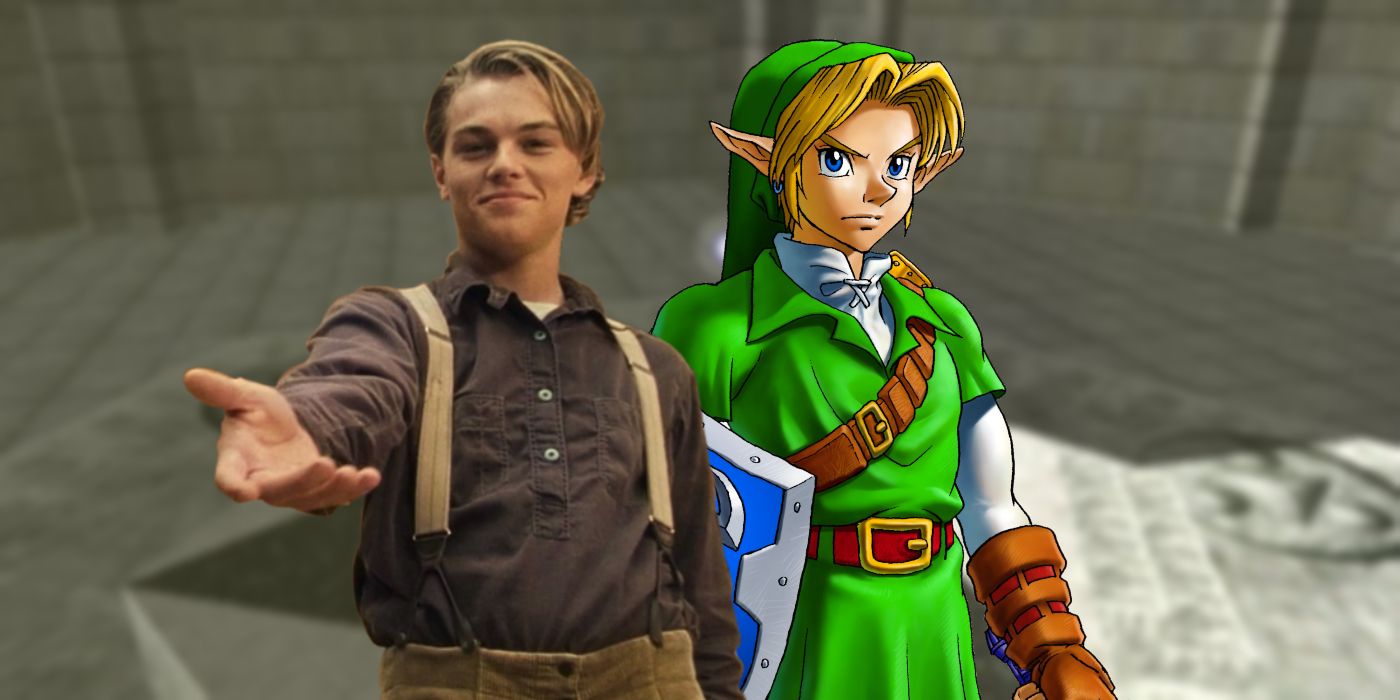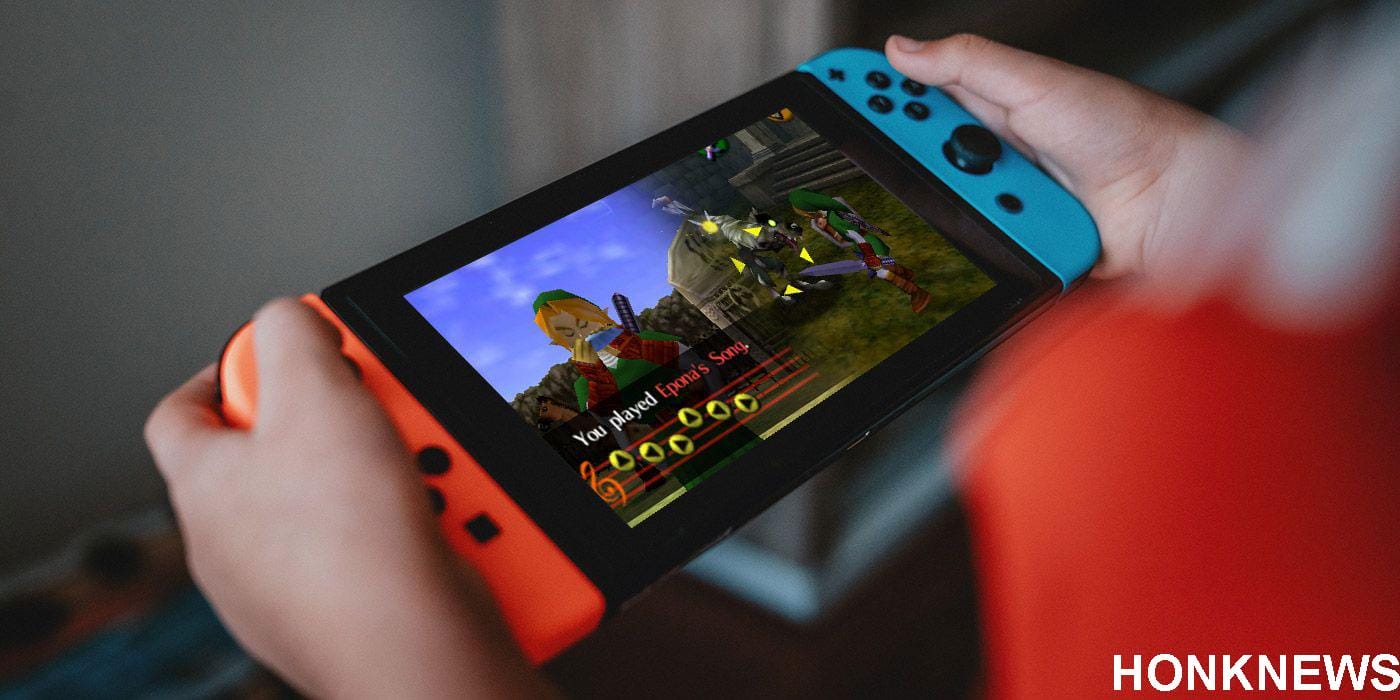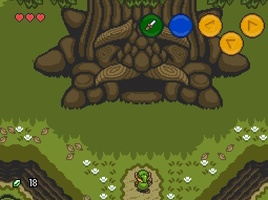
The Legend of Zelda: Majora's Mask (2000) is a direct sequel to Ocarina of Time, and occurs several months after Link defeats Ganon and is sent back in time to his childhood. As a result, it is the first game set in the 'Child Link Timeline', an alternate timeline to the 'Adult Link Timeline' and the 'Fallen Hero Timeline'. The Legend of Zelda: Ocarina of Time USA rom for Nintendo 64 (N64) and play The Legend of Zelda: Ocarina of Time USA on your devices windows pc, mac,ios and android!
Very few games will ever leave a mark as massive as the one left behind by The Legend of Zelda: Ocarina of Time, which debuted a little more than 17 years ago. Still one of the most critically acclaimed games of all-time, Ocarina of Time definitively proved what 3D games were capable of, not only setting the standard for future Zelda games, but for all open-world adventure games to come. Everything from Grand Theft Auto to Assassin’s Creed owes Ocarina of Time ample gratitude.
But what inspired Ocarina of Time? And how was this groundbreaking game made? Here are a few things you may not know about gaming’s gold standard…
The Legend of Zelda: Ocarina of Time was inspired by the black sheep of the Zelda series.
While Ocarina of Time is beloved, Zelda II is sharply divisive, with some fans defending the game, but many more not particularly enjoying it. With its RPG-style progression, unforgiving action, and side scrolling dungeons, Zelda II certainly feels different than any other game in the series.
- Play online: The Legend of Zelda: Ocarina of Time The young hero Link, undertakes an adventure in the kingdom of Hyrule to stop Ganondorf, king of the Gerudo tribe, before he finds the Triforce, a sacred relic capable of granting any wish to its possessor.
- Legend of Zelda Ocarina of Time Vol 1 you need to fill in the form and provide your personal information. Ebook available on iOS, Android, PC & Mac. Gather your favorite books in your digital library.
Well, the weird-as-heck Zelda II actually served as Ocarina of Time‘s main inspiration early in development. During the SNES era, Zelda-creator Shigeru Miyamoto and another developer named Yoshiaki Koizumi made a polygonal version of Zelda II as an experiment. When working on the project, Koizumi grew to admire Zelda II‘s sword fighting system, in which you have to quickly duck, dodge, and parry your opponent’s attacks. A few years later, Koizumi became one of the first developers to join the Ocarina of Time team and he brought his love of Zelda II with him. A lot of the things you associate with Ocarina of Time — horse riding, the open Hyrule field, fiendish, puzzle-filled dungeons — weren’t originally in the plan. What Koizumi and the team really wanted to do was create a more complex, 3D version of the battle system from Zelda II. The end result was a Zelda game that was more action-based than past titles in the series.
Shigeru Miyamoto wanted Ocarina of Time to be a first-person game.
Life is a first-person Zelda game when you have your own Master Sword.

Nintendo isn’t particularly well-known for its first-person games, but Shigeru Miyamoto is actually a self-professed fan of first-person shooters. No, really. With the The Legend of Zelda: Ocarina of Time, Miyamoto and his team planned to really push the capabilities of the N64, and so he felt a first-person perspective would force the player to focus on the cutting-edge environments they were creating. There were even plans to put the game on rails in between dungeons, essentially taking players on a guided tour of Hyrule.
Why was the first-person perspective dropped? The most basic reason possible – the development team liked the 3D version of Link they had created, and they couldn’t bear to keep him from being on screen. Sometimes you just have to go with what looks cool.
Ganon’s Castle was originally a hub similar to the castle in Super Mario 64.
The Legend of Zelda: Ocarina of Time fits a crazy amount of game into a tiny amount of storage (the game’s cartridge is a mere 32 MB). Initially, the development team wasn’t sure how much space they would have to work with, so the original plan was to take a page from Super Mario 64 and center the game around Ganon’s Castle. Like in Mario 64, Link would travel to different areas and dungeons by jumping through paintings, but aside from the castle, there’d be no central overworld to speak of. The Phantom Ganon boss from the Forest Temple that leaps between paintings is a holdover from this version of the game.
Ocarina of Time only featured adult Link at first.
Zelda fans tend to be split as to whether they prefer precocious kid Link or the strapping grown-up version, but in Ocarina of Time, you get the best of both Links. This very nearly wasn’t the case, as the development team didn’t think there would be enough space to store the animations for both young and adult Link, so they chose to focus solely on the adult variant. It wasn’t until they were deep in development that they realized most of adult Link’s animations could be reused for young Link and decided to put both in. This required a major revamp of the game’s story, but it was for the best, as Link’s growth from naive kid to man is one of the things that really sets Ocarina of Time apart from other Zelda games.
The game’s tone and characters were inspired by Twin Peaks.
We never got a Twin Peaks game, but Ocarina of Time is a damn good substitute.
Ocarina of Time may not feature a scene where Link enjoys some cherry pie and coffee at a local Hyrulian diner, but according to Shigeru Miyamoto, the game’s world and plot were deeply inspired by David Lynch’s Twin Peaks. Specifically, Miyamoto and his team liked the way Twin Peaks often focused on quirky character interactions rather than worrying too deeply about a coherent plot. Ocarina of Time‘s story is actually relatively simple, but it feels epic because you meet so many memorable (and sometimes rather creepy) characters along the way. This approach would be pushed even further in the next Zelda game, Majora’s Mask, which was almost entirely focused on navigating the interlocking lives of the game’s cast of weirdos.
The fishing minigame was created in secret by a guy slacking off at work.
Dude, aren’t you supposed to be, like, saving the world or something?
Who doesn’t love Ocarina of Time‘s fishing minigame? Really, it’s more than a minigame – in terms of depth, it could almost stand on its own. These kinds of extras are fairly common today, but back in 1998, Nintendo dropping a fully-developed fishing game in the middle of a Zelda game just for the heck of it was kind of mindblowing.
Well, the ol’ fishing pond wouldn’t exist at all if it weren’t for some pretty blatant goofing off. Kazuaki Morita, who was in charge of designing Ocarina of Time‘s bosses, was struck with inspiration (or boredom) while creating Morpha, the boss of the Water Temple. Morpha is a mass of living water that emerges from a large pond, and at some point, Morita thought, “Hey, what if there were fish in that pond?” So, he added one. He then made a simple fishing pole, reused Link’s sword swinging animation for casting, and just like that, he had cobbled together a simple fishing game. Eventually, it was discovered Morita had been dickering around with his fishing game instead of making bosses, but surprisingly his superiors just shrugged and let him keep going with it. Ah, the things you could achieve while blowing off work before Facebook and Twitter.
All the characters at Lon Lon Ranch are references to the Mario series.
Who knew Mario was into bolo ties?
The Zelda and Mario games often cross over in subtle ways, with Ocarina of Time being no exception. In particular, Lon Lon Ranch, where you first acquire your trusty steed Epona, is packed with Mario references. The owner of the ranch, Talon, and his jealous, scheming employee Ingo are obviously meant to resemble Mario and Luigi in both appearance and personality. In another weird touch, Talon and his daughter Malon both wear pendants that resemble Bowser’s grimacing mug. Are Talon and Malon descended from a version of Mario where Bowser took over the Mushroom Kingdom? Okay, fine, I’m probably reading too much into it, but you never know.
There are portraits of Mario characters hidden in Hyrule castle.
There’s also a much more direct reference to the Mario games in Ocarina of Time. After you meet Zelda for the first time, go check out the window to the right side of the castle courtyard. Inside, you’ll see pictures of Yoshi, Peach, Mario, Bowser and Luigi on the wall.
Navi was supposed to have romantic feelings for Link.
HEY! LISTEN! No game, not even Ocarina of Time, is perfect, and most players would agree that Link’s very loud, very insistent fairy friend Navi can be a bit grating. Well, originally, she was going to be even more of a pest. As initially conceived, Navi would have been a more traditional Tinkerbell-like fairy rather than a ball of light, and the poor girl would have had a hopeless crush on Link, taking out her jealousy on Princess Zelda and the bevy of other girls Link hangs out with throughout Ocarina of Time. Apparently, Nintendo decided that saving the damn world was enough drama for Link, so the jealousy angle was cut from the final game.
There’s a secret way to play with the pitch and tone of your Ocarina.
The titular Ocarina of Time wasn’t just another random collectible, it was actually a surprisingly versatile musical instrument. In addition to the five main notes played by pressing the A and C-buttons, you can make notes sharp or flat by pressing the R or Z button, raise or lower the pitch by tilting the analog stick up or down, and add vibrato to notes by tilting the stick left or right. The Ocarina of Time has a full one-and-a-half octave range, meaning you play pretty much any song you want on it, so start working on your version of “Stairway to Heaven” now.
The game was censored to remove blood and religious references.
Legend Zelda Ocarina Time
Ocarina of Time may not seem terribly edgy, but it might be Nintendo’s most heavily censored game. Early versions of the game had Ganondorf coughing up and shedding red blood during the climatic battle, which was later changed to green. Nintendo also removed some religious references – originally, the Fire Temple theme contained samples of a Muslim prayer, and Ganondorf’s people, the Gerudo, were represented by a symbol very similar to the Islamic Star and crescent. According to Nintendo, the prayer samples were unwittingly taken from a stock music catalog and were removed due to Nintendo’s own policies against religious references in games. Presumably, the Gerudo symbol was also changed to cover their bases. Nintendo is nothing if not overly cautious.
An Ocarina of Time expansion was planned, but never released on the N64.
What’s the only thing better than Ocarina of Time? More Ocarina of Time! Nintendo had planned to release a rewritable disc add-on for the N64 called the 64DD, and an Ocarina of Time expansion was going to be its killer app. Entitled Ura Zelda, the expansion would have featured remixed dungeons, new enemies, more masks and even the ability to edit your own dungeons. Unfortunately, the 64DD flopped hard in Japan (and wasn’t even released elsewhere), so Ura Zelda was canceled. Years later, Nintendo released The Legend of Zelda: Ocarina of Time Master Quest as a bonus alongside The Legend of Zelda: Wind Waker, but it only featured Ura Zelda‘s remixed dungeons and omitted the expansion’s other planned features. A full Ocarina of Time expansion was too good for this fallen world.

There you are, a few facts about one of the greatest games of all-time. Know some Ocarina of Time facts I missed? Got any cherished Zelda memories you’d like to share? Venture forth into the comments and let your geek flag fly.
And hey, while we’re at it, how about a few interesting factoids about the original Legend of Zelda and series creator Shigeru Miyamoto?
(via Iwata Asks here, here & here, Flying Omelette, VG Facts & Zeldapedia)
How To Play The Legend of Zelda: Ocarina of Time 3D On PC

There are two components for playing a 3ds The Legend of Zelda: Ocarina of Time 3D game on your PC. The first component is the emulation program which can imitate the 3ds OS and software.
The second component is the The Legend of Zelda: Ocarina of Time 3D game itself to play on the emulator.
Step 1: you can start by downloading a reliable and bug free emulator. We’d suggest Citra – it’s open source, fast and one of the most frequently updated.
Once you have finished downloading Citra, extract the downloaded .7z file to a location, for example your Desktop. After, double click the citra-setup-windows.exe file in order to start the emulator.
Your emulator will now be ready to play The Legend of Zelda: Ocarina of Time 3D. But now you’ll need to find the correct ROMs online. A ROM is essentially a virtual version of the game that needs to be loaded into the emulator.
Step 2: return to Citra and hit File > Open. Navigate to the downloaded .exe file and double click it to open it. The game will now run on the emulator and you can play the game freely.

Legend Zelda Ocarina Of Time
Tip: Saving games on an emulator functions a little differently. The integrated save system will not save your progress.
Instead, you’ll need to click File > Save State and then choose an empty slot. You can save your progress in whatever point you like within the game, not only on the official checkpoints offered by the game.
Legend Zelda Ocarina Time Gannon
When playing in the future and you want to continue from your saved state, you can use File > Load State to load up the game from exactly where you last saved it.